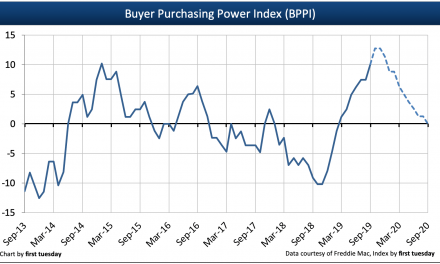California home sales volume fell back in January 2022, resuming seasonal sales patterns which see the fewest home sales occur in this month each year.
30,700 new and resale home transactions closed escrow in California during January 2022. The number of homes sold in January was 12,000 fewer than the prior month and 1,300 fewer than a year earlier, amounting to a 4% year-over-year decrease. For reference, the rapid pace of sales experienced in California since 2020 began to taper off in the second half of 2021, continuing in 2022.
The steep annual sales volume rise that occurred earlier in 2021 was thanks to homebuyers taking advantage of low interest rates and stimulus boosts. Homebuyers have also been influenced by a fear of missing out (FOMO) on a low inventory of homes for sale. However, as stimulus efforts are now behind us and interest rates are increasing rapidly with the Federal Reserve’s (the Fed’s) bond taper, homebuyers have begun to ease off the gas and sales volume is slowing.
Along with a deep cut to home price potential, 2022’s rapidly rising interest rates are causing sales to stall. In response to a recent firsttuesday poll, 34% of readers report escrow cancellations due to the recent interest rate hike.
Related article:
At an annual rate, 2021 ended with 536,600 annual home sales in California. This was a significant 97,400 more home sales than took place in 2020, amounting to a 22% annual increase.
This heightened performance follows several years of flat-to-down sales volume (the bumpy plateau recovery following the 2009 foreclosure crisis and financial crash). But despite recent gains, 2021’s strong year for home sales volume was still 29% below the peak year for sales volume in 2005.
Sales volume trends
Home sales vary from month-to-month for a variety of reasons, most significant being homebuyer demand. This demand is influenced by several factors currently at work in California’s homebuying market, including:
- seasonal differences, as sales volume tends to peak mid-year, falling into the slow winter months;
- mortgage interest rates, which have remained near historic lows throughout 2020-2021 but have bounced higher in 2022;
- homebuyer confidence, which has swung wildly since the outset of the 2020 recession and continues its volatile path through today’s recession hangover;
- available multiple listing service (MLS) inventory, which remains well below homebuyer demand at the start of 2022; and
- in 2020-2021, homebuyer fear-of-missing-out (FOMO), which has pushed both sales volume and prices over sustainable heights.
Year-to-date (YTD) home sales volume can be a strong predictor of annual sales volume. While reports are only available one month into 2022, YTD sales volume is a slight 4% below a year earlier as of January 2022.
firsttuesday forecasts sales volume to fall below 2021 throughout 2022, tempered by rising interest rates, a still-recovering jobs market — and more sober homebuyers.
California home sales in 2022 and beyond
Despite 2021’s sales volume jump, home sales are expected to fall back in 2022, due to:
- the recent expiration of the foreclosure moratorium, which will cause a backlog of forced sales to hit the market, dragging down home prices and discouraging homebuyers;
- lower homeowner turnover as buyer FOMO subsides in the face of rising inventory;
- a lack of support from interest rates; and
- the ongoing recovery of job losses of 2020, nearly 700,000 of which are still absent from the jobs market as of December 2021.
The housing market won’t begin a consistent recovery until well after the need for government intervention and the pandemic response have ended, a timeline which continues to shift. Then, California’s housing market will need to emerge from the ongoing recession hangover and recover the historic job losses of 2020. This stable recovery is not likely to even begin until around 2024.
To read more about home sale trends and firsttuesday’s analysis, view California’s home sales volume charts.














